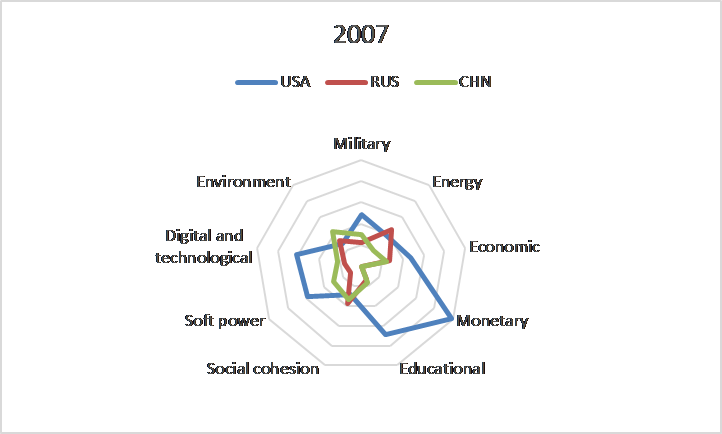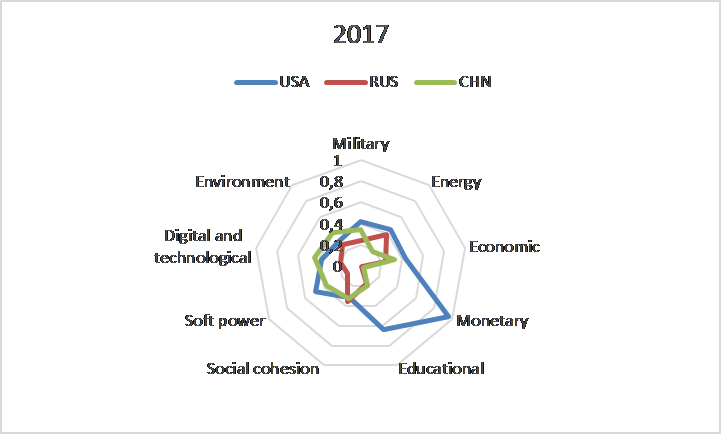A strategic moment for the United States
Strategically speaking, the next few months look set to be a critically important time for America’s leaders. Despite huge uncertainty over public health and the economy, they’re going to have to map out a strategy to contend with the decline in their country’s power – and they’re going to have to do it fast. Their thinking will focus around two themes: the causes of this decline and the chosen solutions. But since the solutions will depend on the diagnosis, these two themes are inextricably linked.

The question of decline is far from new in the United States: it’s been held up as a decisive issue for the future at least since the work of Paul Kennedy[1] and his notion of “imperial overstretch”. It kept analysts occupied in the 1980s, when Japan was rising to prominence; then after the 2009 crisis, as Chinese political competition took shape in the wake of the country’s economic lift-off; and above all very clearly after 2013, when Xi Jinping came to power and China kicked off its new Silk Road project, symbolising its henceforth acknowledged desire for external power. America’s poor management of COVID-19, just as much as the state of near civil-war that exists in some US states, has only ramped up this questioning of power, but driven this time by concerns over a disintegrating social and institutional model. It has to be said that the United States offers a disconcerting – and geopolitically worrying – picture of a superpower which, while still dominant, is at the same time weak…
So the issue of decline has got US think tanks all stirred up, and their thinking will serve as a breeding ground for the future president’s strategy. For the time being, the debate revolves around three ideas on which there is near-universal agreement in the US: (i) the decline is a relative one; (ii) the decline is not inevitable; and (iii) the future of American power is contingent, i.e. mainly determined by US policy.
A relative decline? Yes, and this is apparent when you look at a simplified indicator comparing the relative power of the United States, China and Russia over a long period: the contours of US power are increasingly uneven, while China’s power is increasing in a more balanced way (except in relation to social cohesion, an area in which all three powers show weakness). The United States has the upper hand in the monetary sphere, higher education and the military. It had regained some ground in energy but is now losing it. It has lost ground in the economic arena, digital technology and soft power. In the end, what this indicator says about US/China relations merely confirms what common sense already tells us (which is often the role of indicators): for the time being, neither of the belligerents can win, and both are too powerful to lose. However, to recover its hegemonic status, the United States would need to rebalance the footprint of its power, which would mean upping its game in those areas where it is currently weakest.
Comparative power indicator
Source: ANIA, Crédit Agricole S.A./ECO
These power factors are composite indicators based on 34 quantitative variables. The total of all scores assigned to each power comes to 100. All variables are equally weighted within each factor.
Is it true that decline is not inevitable? No one knows. Britain managed to remain a hegemonic power for two historical cycles, but only because of the weakening of opposing powers (in this case France) and a technological breakthrough (the first Industrial Revolution). So there is no proof that US decline is inevitable and, in any case, no one is going to share such an extreme opinion with the United States… But this uncertainty has significant consequences for other countries and their businesses: they are going to have to hold steady in turbulent waters and pursue dual strategies that enable them to work with both enemy powers while doing their best to avoid punitive or confiscatory strategies.
Lastly, a contingent decline? A classic mistake made by hegemonic powers is underestimating that which is beyond their control – i.e. the enemy’s strategy. Moreover, the strategic culture of the “absolute enemy”[2], which has been the subject of numerous studies, is baked into the United States’ DNA and tends to heighten the risk of the country caricaturing its enemy once the latter has been identified. There is, however, an element of truth in the idea of contingent decline: America will not be able to stem its loss of power unless its government adopts a centralised strategy. On this issue, there is consensus on one aspect of Donald Trump’s foreign policy (though not his methods): the trade war came at the “right time” – any later and it would have been too late to halt China’s ascent.
So, a relative and contingent decline that is not inevitable… The challenge now is to define a policy based on this diagnosis – obviously something that’s impossible to address today. However, we can at the very least suppose that a few of the lines drawn by Donald Trump might remain in place. For example, we can assume that strategic competition with China will continue, playing out in various arenas of power but also through a war of standards, which will have a big impact on all businesses. We can also count on burden-sharing (whereby NATO allies have to pay their share of security costs) – something to which the Democrats are not opposed. The tendency towards protectionism is also likely to persist: the Americans think the opening up of the international economic and political system they themselves oversaw is precisely one of the causes of China’s ascendancy.
Finally, only once a clear diagnosis has been established will it be possible to truly broach the question of alliances, which will undoubtedly be a key issue for the next administration. The question then will be whether the United States is able (and willing) to find a leadership role without the need for hegemony. Will it be able to build a robust alliance other than against a common enemy? And, above all, can it inspire the confidence needed for leadership without first resolving its domestic social and political divisions?
Tania Sollogoub
tania.sollogoub@credit-agricole-sa.fr
[1]The Rise and Fall of the Great Powers, Payot, 1989.
[2] See in particular Carl Schmitt, La Guerre civile mondiale: Essais 1943-1978, Éditions Ere, 2007





